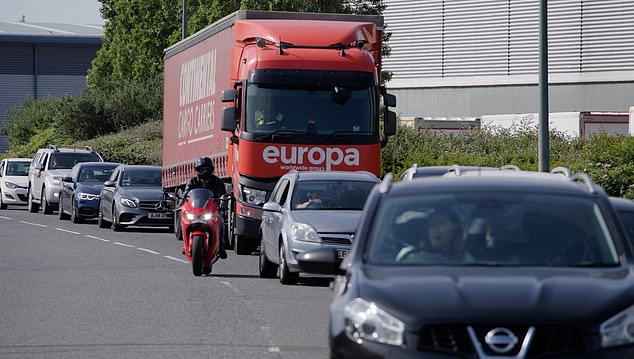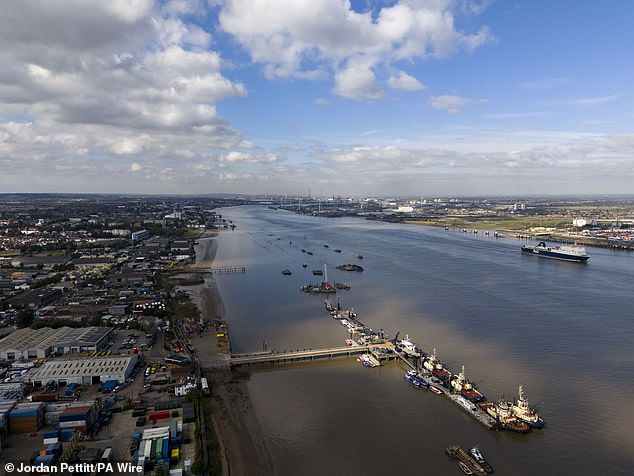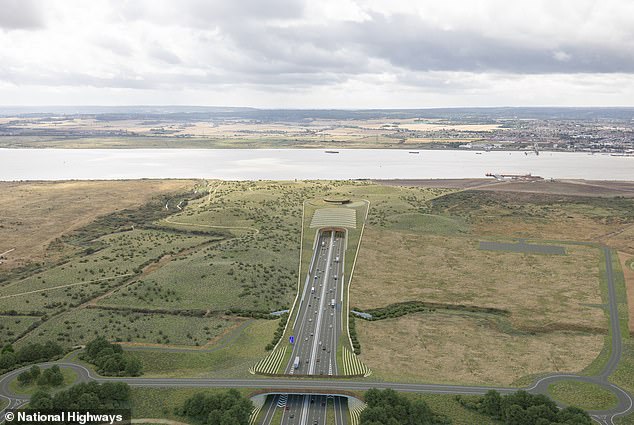Plans for a £9 billion road tunnel linking Kent and Essex have been formally approved by the government.
The long-mooted Lower Thames Crossing, which would feature a 14.5-mile road including a 2.6-mile tunnel passing beneath the River Thames, was granted a development consent order on Tuesday morning by the transport secretary Heidi Alexander, said the Planning Inspectorate.
Work on the project has been ongoing since 2009, with more than £1 billion of taxpayers’ money spent on plans that has been beset throughout by delays and controversy.
The Lower Thames Crossing is aimed at reducing congestion on the Dartford Crossing with a new motorway-style road.
It would connect the A2 and M2 in Kent to the A13 and M25 in Essex via what would be the UK’s longest road tunnel.
It is projected that this would nearly double road capacity across the Thames east of London.
National Highways said the government is ‘currently exploring private finance options for the project’.
Construction could start next year, with the new road expected to open in the early 2030s.

The southern tunnel entrance of the new Lower Thames Crossing linking Kent with Essex

Drivers queue up in gridlocked traffic going into Dartford town centre in Kent

A view of the River Thames from Gravesend looking west towards London, at the location of the proposed Lower Thames Crossing between Kent and Sussex
The route is intended to relieve congestion on the orbital M25, which it will connect to near South Ockenden in Essex, while it will also join the M2 near Rochester in Kent.
Dartford residents have laid bare the difficulties posed by congestion in the area, which often makes everyday tasks take hours.
Jo Smith, a 42-year-old office administrator and mother of two, recalled a nightmare ordeal when collecting her daughters from a nearby shopping centre. A round-trip that should have taken 30 minutes instead lasted more than six hours due to severe congestion.
She said: ‘I finished work at 3.15pm. No buses were available for them [her daughters] so I went from Crossways to Bluewater to pick them up so they could get home. I didn’t get to Bluewater till 6.15pm and we didn’t get home until 9.30pm.’
‘In July, my mother-in-law was put on end of life care and we feared that we could get a call at any minute and not be able to make it to the care home to say goodbye because of traffic, as simply getting in and out of our property can be a nightmare.’
Tracy Perry, an executive assistant at Crossways, also suffers because of the constant traffic that travels past her home, claiming that the vibrations from the lorries rattle her windows and doors for hours.
The 55-year-old said: ‘We live on Main Road, Sutton-at-Hone, which is used as a cut-through when there is trouble at the Crossing. We have cars and HGVs idling outside our property for hours into the night, even when the incident has been cleared, hours earlier.
‘The vibrations from the HGVs rattle our internal doors, that’s aside from the onslaught of fumes and noise. What people forget is, just because the incident has been dealt with, the traffic that has built up locally takes hours and hours to clear.’

Dartford resident and mother-of-two Jo Smith, 42, above, was stuck in traffic for about six hours because of congestion coming from the Dartford Crossing
!['Getting in and out of our property can be a nightmare,' said Ms Smith. 'Some days my husband has turned around and worked from home as [he just] can't get in'](https://www.americanpolibeat.com/wp-content/uploads/2025/03/1742911399_419_UKs-largest-ever-road-tunnel-spanning-14-miles-to-be.jpeg)
‘Getting in and out of our property can be a nightmare,’ said Ms Smith. ‘Some days my husband has turned around and worked from home as [he just] can’t get in’
She has even been forced to buy an electric car to make the constant queuing more bearable and less expensive than having to regularly replace the clutch on her car.
‘I work on Crossways, which is next to Dartford Bridge and some nights, I have spent nearly two hours just trying to get out of my work’s car park. Quite often, it can take me between one and one and a half hours to get home, which is only six miles away.
‘I have now bought an automatic car as it makes being stuck in endless traffic queues more bearable, and less expensive as I’ve had to replace clutches due to constant congestion and clutch control.’
Lee Champion, a 48-year-old lawyer, said the traffic has left him unable to leave his home at times, even forcing his elderly parents to miss doctor’s appointments because he cannot leave his property to drive them.
He said: ‘When there are problems with the bridge, unfortunately all traffic diverts off and into our village, a small village which isn’t designed for that volume of traffic. It just causes gridlock.
‘We’ve recent had people pull onto our driveway in traffic, knocking at the door and asking for hot water for a baby bottle as the desperately needed to feed their baby in their vehicle.
‘I live with my elderly parents who are fast approaching 80 – with failing health they have regular doctor and hospital appointments which are sometimes missed and is of great concern to us.’
Matt Palmer, National Highways executive director for the Lower Thames Crossing, described the scheme as ‘one of the UK’s most important infrastructure projects’.

The northern tunnel entrance of the Lower Thames Crossing which is in the planning stages
He said: ‘It will unlock growth with quicker, safer and more reliable journeys, and redraw the blueprint for building major projects in a net-zero future by scaling up the use of low-carbon construction, and leaving a legacy of green spaces, green skills.
‘Our plans have been shaped by the local community and refined by robust and rigorous examination from independent experts.’
Mr Palmer said National Highways is committed to ‘working with our neighbours’ to build the crossing in a way that offers them ‘opportunities to work and learn new skills while reducing impacts’.
‘We are shovel-ready and have our delivery partners on board, and today’s decision allows us to work with government on funding and start the detailed planning that will let us start construction as soon as possible,’ he said.
David Wells, chief executive of industry body Logistics UK, said that, with businesses across the country ‘currently hamstrung by delays crossing the Thames’, the announcement was ‘excellent news’ .
‘Industry is united in its backing for this vital trade route,’ said Mr Wells.
Jim Dickson, Labour MP for Dartford, said his constituency had suffered from ‘endless gridlock’ because previous governments ‘dodged’ making a decision on the Lower Thames Crossing.
‘This decision will unlock economic growth across the country and finally deliver a solution to the traffic chaos faced by my constituents on a daily basis,’ he said.
Thurrock Council in Essex has consistently opposed the project, citing negative economic, social and environmental impacts, but the leader of Kent’s Dartford Borough Council is in favour of the scheme.
Local campaigners Thames Crossing Action Group claim it would be ‘hugely destructive and harmful’, and a waste of money.







